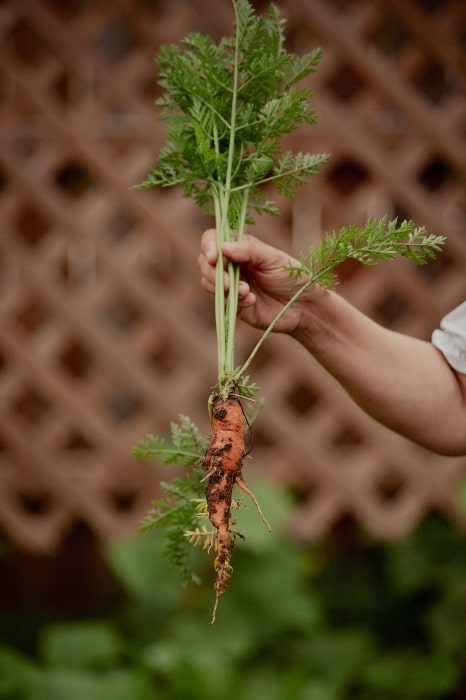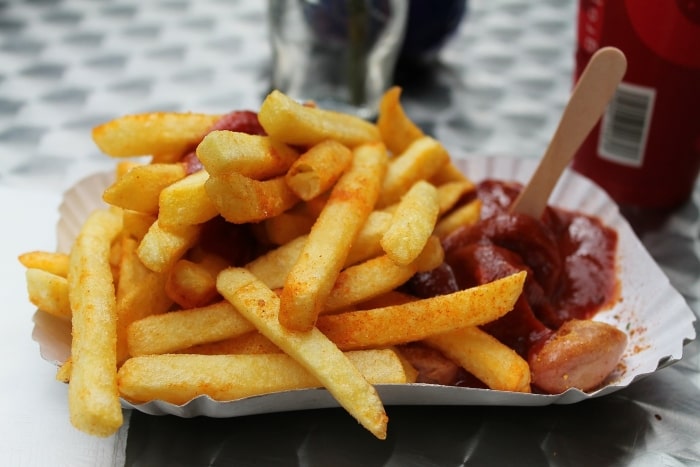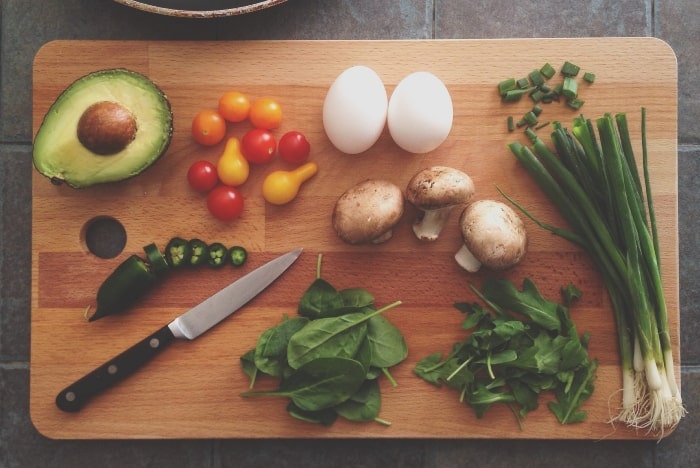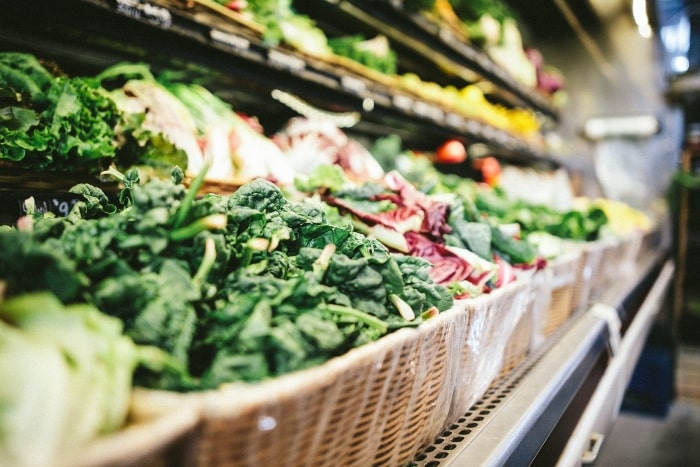This article will walk you through:
- What is Real Food?
- Why Cut Out Processed Foods?
- How to Make the Switch to Real Food
Eating healthy is a lot more confusing and complicated than it needs to be. With endless information and advice out there, it can be overwhelming to try to decipher what you should or shouldn’t be eating.
This is why, here at Life and Dirt, we are all about bringing it back to the basics of real food. While the best food for you is certainly variable on an individual level, most of us looking to improve out daily eating can greatly benefit by sticking to a diet consisting simply of real food.
So what exactly is real food? Let’s get into it….
What is Real Food?
In short, real food is food that most resembles how it comes from nature looking like. It is food that has undergone no or minimal processing, enhancing, enriching, or any other man-made modifications.
Real food is energizing.
Real food serves the core purpose of food – it fuels our bodies. It doesn’t make you lethargic, it doesn’t put you in an afternoon slump. Instead it energizes and reinvigorates. Real food is the soup or broth you drink when you’re sick and need to be brought back to the land of the living. It doesn’t just spike out blood sugar with a blast of quick calories/sugar, rather it provides sustenance and gives our body, our muscles, our organs, the energy it needs, in all its different forms, to function properly.
Real food is nourishing.
Real food provides our bodies with the essential nutrients that we thrive on. Each cell in your body needs energy, but it also needs all sorts of unique and specific molecules and compounds to function properly – to grow, heal, build, repair, defend. Many nutrients, fats, and amino acids are termed “essential” because the body cannot produce these molecules on its own and they must be acquired through diet. Real food provides these essential molecules.
Real food looks like….
- fruits and vegetables
- whole grains
- eggs
- whole milk dairy products
- meat and seafood
- legumes
- nuts
- seeds
- unrefined fats/oils
- natural sweeteners like honey and maple syrup (<- that’s right, real food includes sugar. It just includes sugar in its natural form, where there are other benefits offered alongside just glucose goodness.)
Real food tastes good.
Maybe not in the same way a deep fried donut dusted in icing sugar tastes good, but good in a way where you can enjoy the full, natural flavours of the ingredients you are eating. Real food is tasty and satiating.
Real food comes from real dirt.
All food comes from dirt. All of it. So the quality of the food comes from the quality of the dirt it was grown in. The fewer the steps from dirt to plate, the more naturally nutritious the food will be. Real food looks like grass-fed meat, pasture-raised eggs, pesticide-free produce, etc.

What Are Whole Foods?
If you’ve heard the term real food, you’ve probably also heard the term whole food.
On this site, I tend to use these words interchangeably, as they basically describe the same thing. Whole foods are just as they sound – foods that are in their original, natural, wholesome state, without or with minimal processing/modifications made.
Whole foods are foods with a single ingredient, or a few simple ingredients.
I usually think of whole foods as the ingredients, and real food as the dishes or things you eat that you make from whole foods (as well as the ingredients themselves).
What are Processed Foods?

Processed foods are the opposite of real or whole foods. They are foods that have been altered in some way to make them taste better or last longer.
The term “processed foods” can sometimes refer to whole foods that have been minimally processed – for example, canned beans. These are whole beans that have been sealed in a can, perhaps in a brine, to preserve them. This packaging means the beans have technically been processed, but this minimal processing does not have a negative effect on the original food as it remains unaltered from its natural state, for the most part. Something like canned beans is generally not considered to be “processed food.”
Another similar example would be peanut butter. Peanuts are processed (roasted and blended) to turn them into a creamy butter. However, if the peanut butter is made from 100% peanuts, it is still a whole food even if its appearance has changed slightly. The difference would be if the peanuts were blended with high fructose corn syrup and sodium and hydrogenated palm oil to make a creamy butter – this is what is really meant by “processing.”
The foods to worry about are heavily processed, or “ultra-processed,” foods that have been chemically altered so much that you couldn’t even guess what the ingredients are.
Let’s take the classic example of a donut. What is a donut made of? Well, it’s made of dough, so that would include flour which comes from wheat. And then it’s fried in oil which comes from…canola? Soy? Palm? A blend of all 3? And then it’s coated in white powder sugar which comes from…sugar cane I guess. And then if it’s sold in a pack in the supermarket, it probably also contains preservative agents which come from…honestly I have no idea.
You get the point.
Processed foods are often lacking in flavour (lost through the growing or refining processes) and so additives have to be added to make them actually taste good.
Additives are most often in some form or another of sugar, because, let’s be honest, sugar makes things taste good. Additives often also include excessive sodium and hydrogenated oils (the worst kind of fat out there).
Highly processed foods look like…
- ready-made meals (frozen, microwavable, etc.)
- soft drinks
- savory snacks
- fried food, junk food, fast food
- condiments
- some breakfast cereals
- some processed meats
Why Cut Out Processed Foods?
Processed foods make up a large part of the standard Western diet. Globally, there is a trend toward ultra-processed foods dominating global and national food supplies.
The problem is that regular consumption of highly processed foods can lead to a multitude of health problems.
The trend towards increased prevalence of processed foods has coincided with a trend towards increased prevalence of non-communicable diseases, such as obesity, diabetes, cardiovascular disease, and cancer.
How to Make the Switch to Real Food

Making the switch from the standard Western diet, to a diet of real, whole foods, is no joke.
Any diet change is difficult, especially when you’re used to a diet with excessive sugar – a diet that is highly convenient and highly addictive.
But there is hope! Every shift towards a real food diet, no matter how small, has its rewards – you feel better (physically and mentally, and even emotionally) and you appreciate food so much more.
I’ve outlined a few simple and easy-to-implement changes that you can make as an absolute beginner to improve your diet today. These changes include:
I believe these 3 guides are a great place to start – they are doable, straightforward, and take minimal effort.
They include action steps and tips for buying whole foods (from the supermarket, farmer’s markets, etc.) and avoiding highly processed foods (read ingredients labels, get to know the different names for sugar and other additives, etc.)
Then, if you’re ready for the next steps, you can start looking into organic vs non-organic, grass-fed vs grain-fed, local vs global, etc., and you can even start growing your own fresh and healthy foods at home!
…but I’m getting ahead of myself, for now keep it simple. Ditch the processed foods, embrace the whole foods.
I hope this site will act as a guide to help you make the move to more real and wholesome food.

